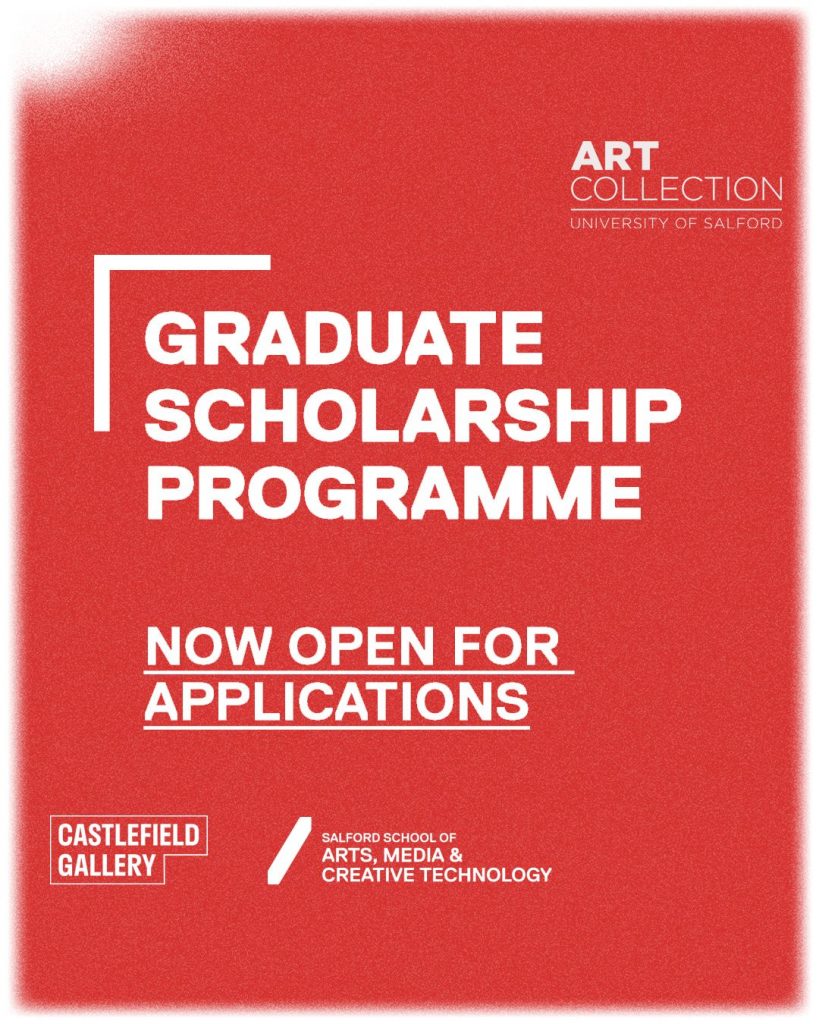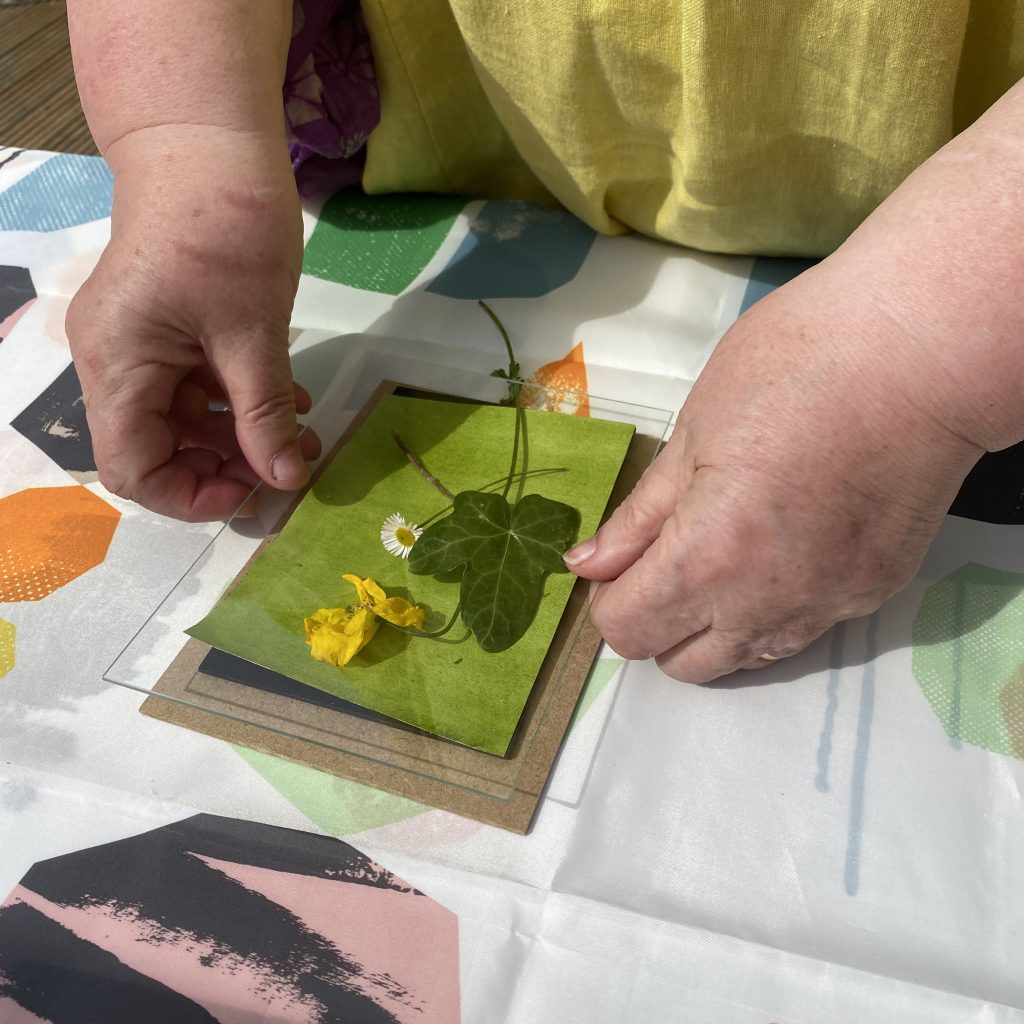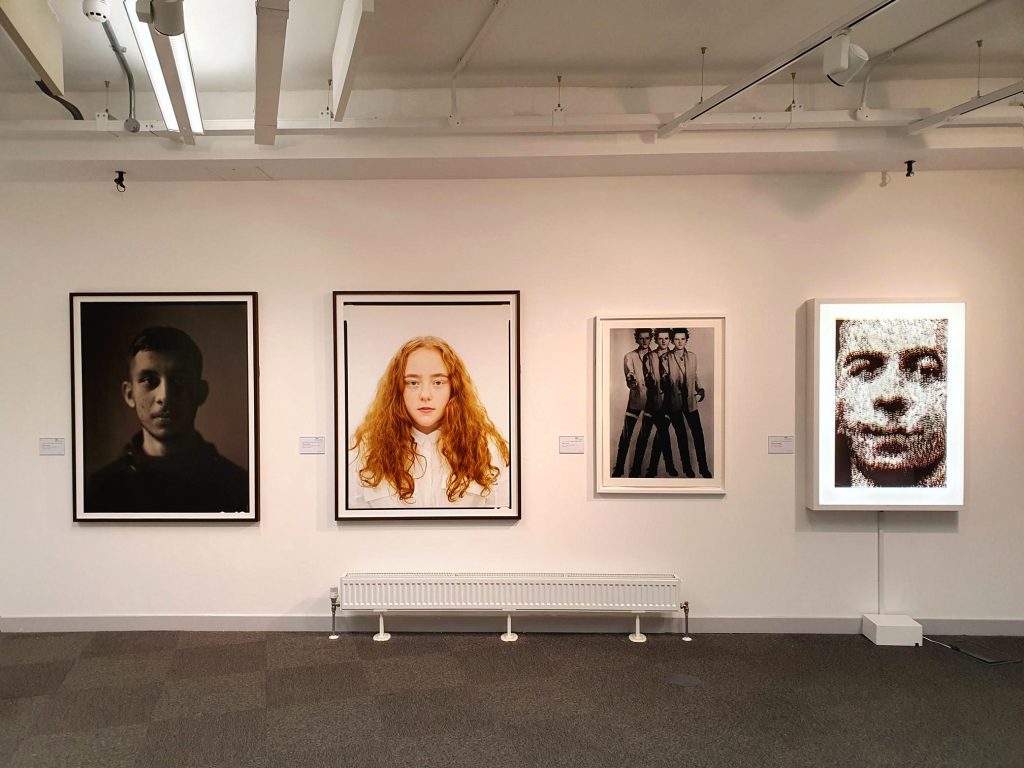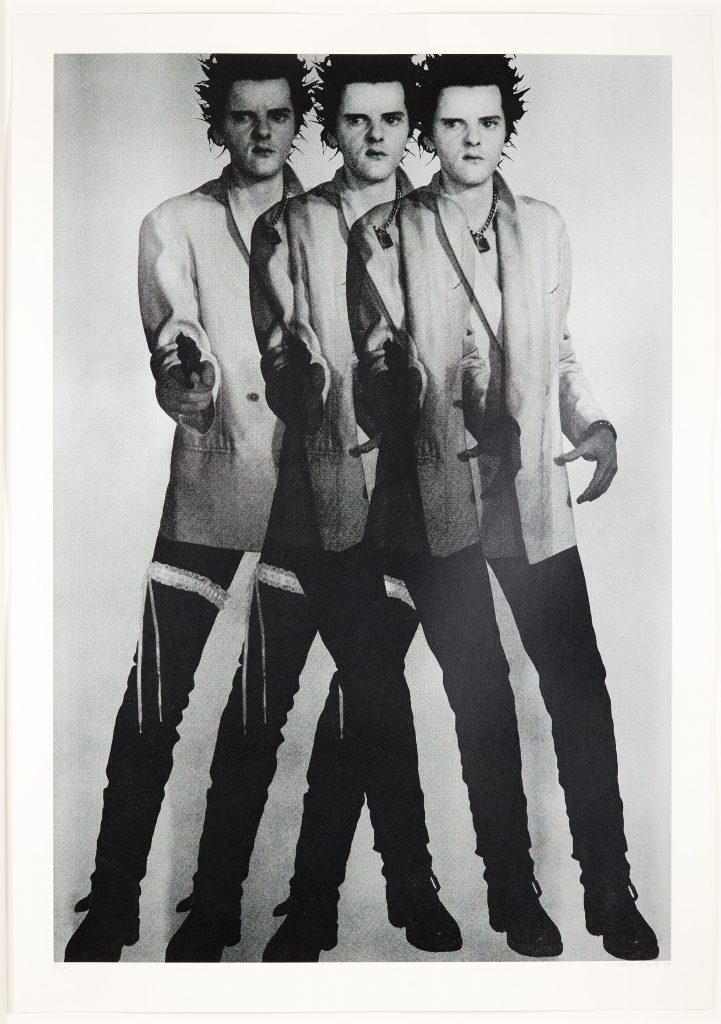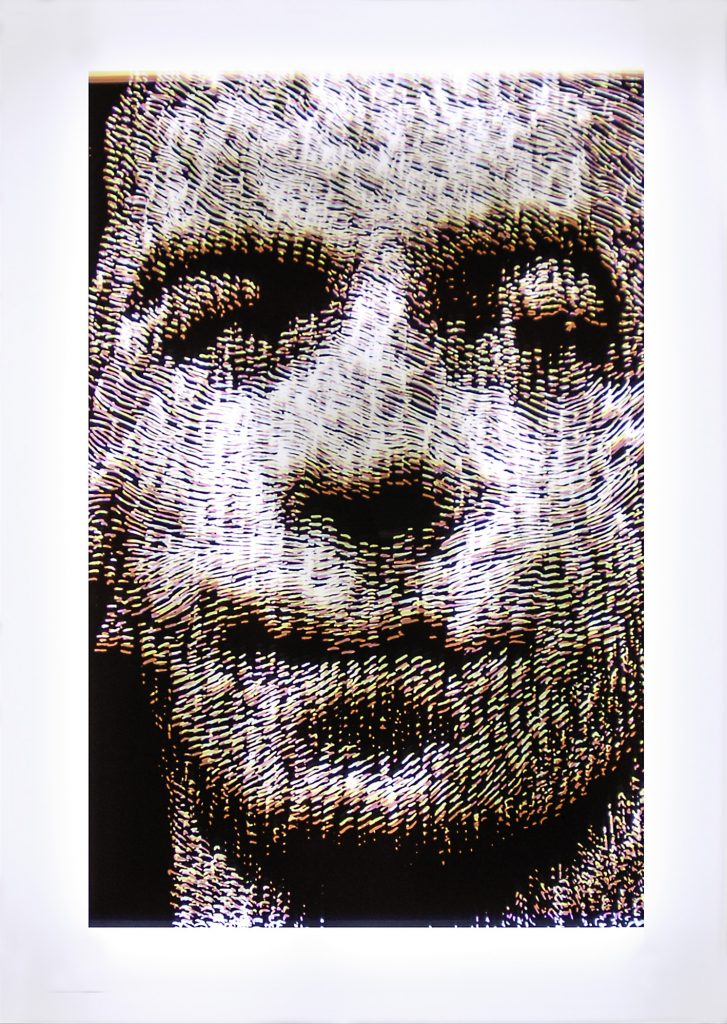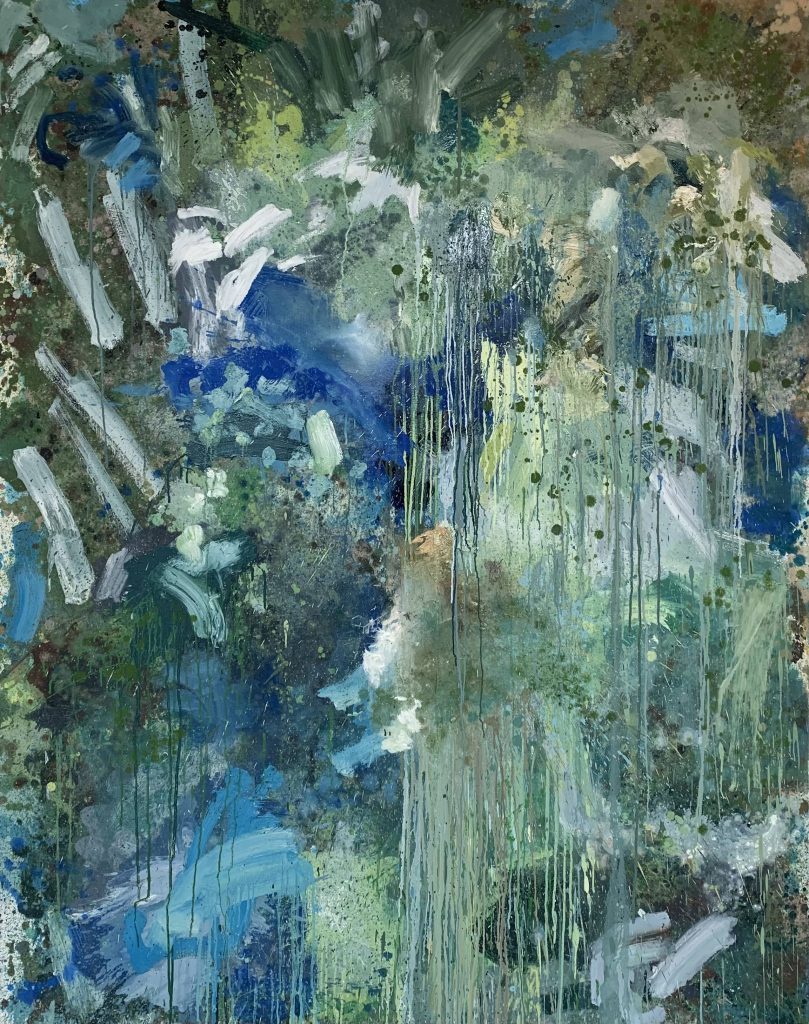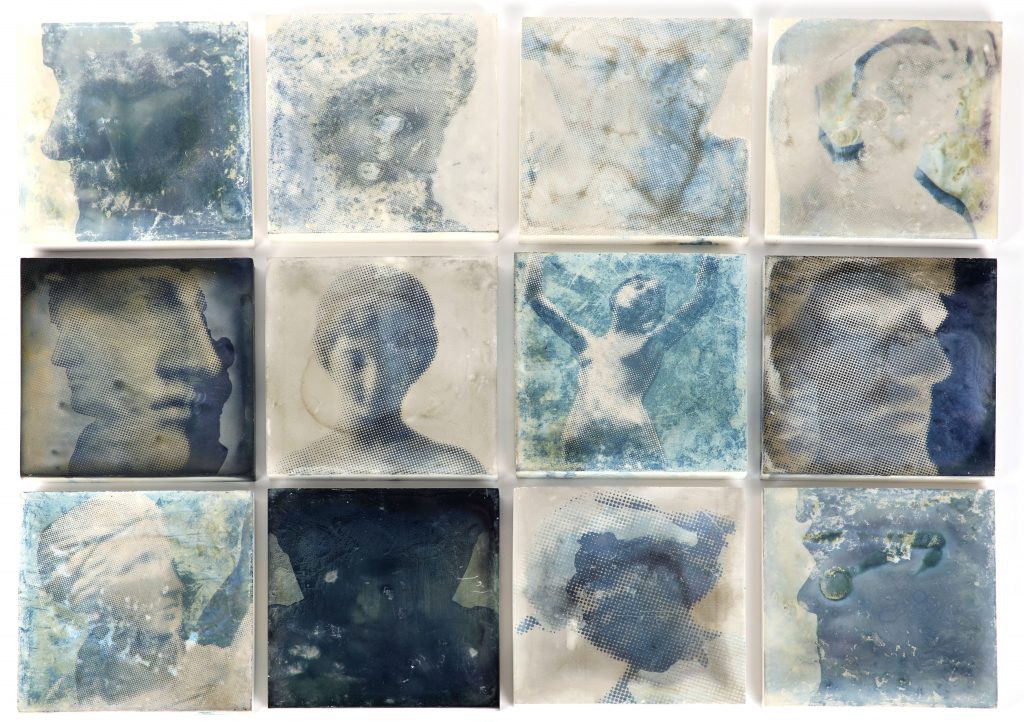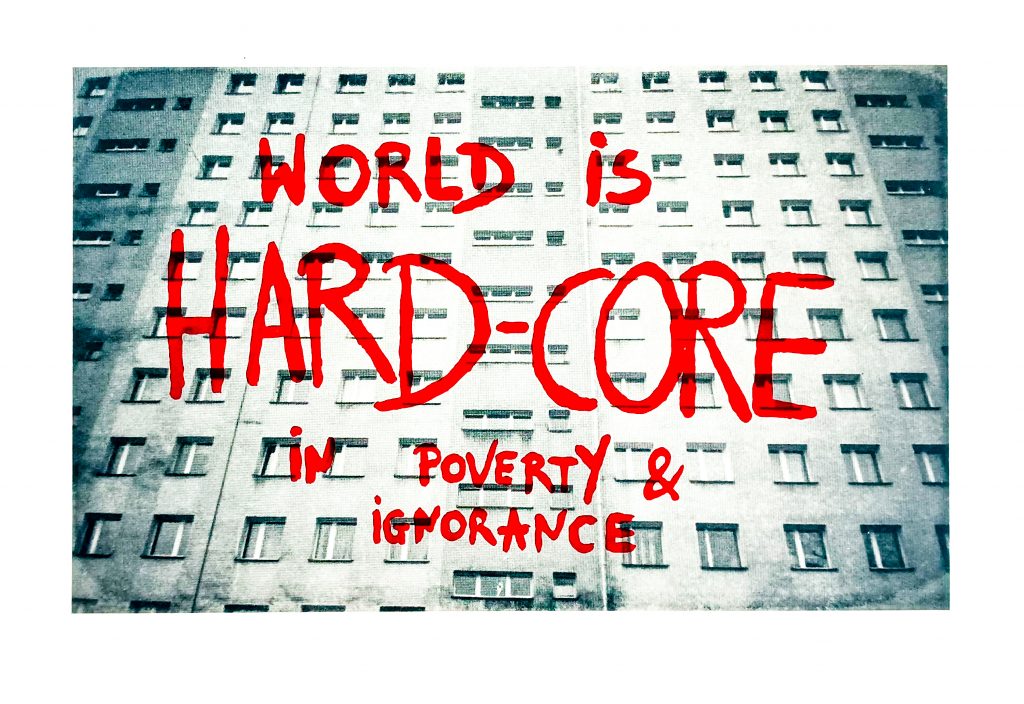Experiencing ‘From The River’s Mouth’
In May 2025 our Artist in Residence at the University of Salford Acoustic Labs, Hayley Suviste, presented a 3-part installation as part of Sounds From The Other City. Artist Lizzie King shares her experience of From The River’s Mouth below.
A growing amount of rivers have been granted the legal status of personhood, a legal right to flow, a way for rivers to be protected and a way for them to be honoured. In her installation “From the River’s Mouth’ Hayley Suviste gives the audience a unique way to connect with the River Irwell meeting it at its Salford stretch. The Irwell is a life source that runs 63 km. Many sound artists have previously explored rivers through their horizontal journey, however Suviste gives us the opportunity to experience the Irwell through a series of vertical interactions. As the work progresses down the layers of the Irwell we encounter the perspectives of past, present, and future.
‘From the River’s Mouth,’ makes use of three sonically distinct rooms to explore three different parts of the Irwell’s being and of its timeline.

Photographed by William Rowe
The Anechoic Chamber
We, the audience, are guided into a dark room lit with one blue light and a bouncy floor, the anechoic chamber. Silence. You feel yourself swaying with the movement of other people until everyone goes still.
Shhhhhhhuuuusssssshhhhhhhhhh swoooooooorrrllll
It feels like being in the centre of rushing whirlpool, the sounds move around you gushing and gurgling. Distant sounds of ducks pitter in the background. The gushing dissipates into trickles, a pleasant tonal sound appears feeling like it is coming from a distance. The river’s life dances around the audience. The gurgling and murmurs transport me under the water, I want to sit and drink it in. It lulls the audience bringing a tranquility and a feeling that is almost tactile of having met the Irwell. As I am wishing to drift off with the river 4 minutes is up, the door opens, the sounds stop, we leave for the next room.
The Listening Room
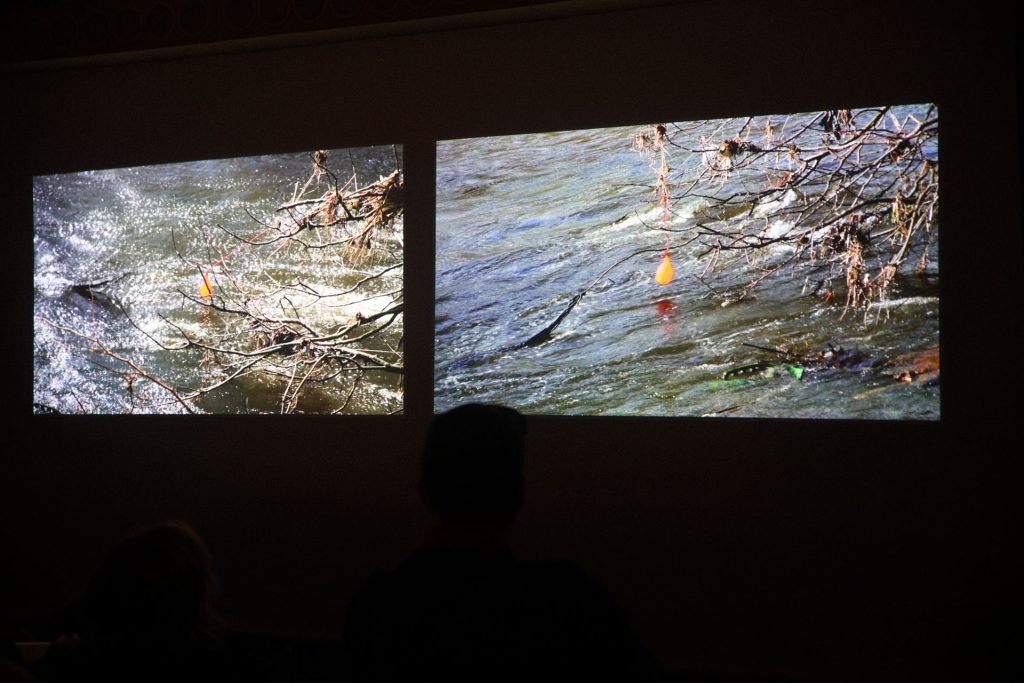
Photographed by William Rowe
The next room we sit in is the listening room. Filled with sofas, bean bags, and 124 speakers, we take a comfortable seat. Projected onto a large screen in front are two videos side by side. One shows us the most vivid blue colours running in the water and the other the pungent orange of the sediment from the bank. We are introduced to a series of fixed frame videos showing different scenes from the river bank. The sound of the river is different this time we are alongside it, hearing noises all around us as if we were sat by the Irwell itself. We see and hear the geese who inhabit this stretch alongside the vivid colours and textures which really are worth celebrating. This time the Irwell bables and tinkles it has a gentler quality now that we are aside it rather than inside it, a loop of synthesised melodies accompany the waters flow. Two different angles of a red balloon caught on branches. The sound of Reggie being called in the distance, a runaway dog. It is an experience that we are more familiar with but one that our attention may not often focus on. A woman singing a folk song drifts in from the left, again we are lulled as tonal loops intermingle with the river’s tinkling. Until the film comes to an end I like other audience members are reluctant to get up from our seats.
The Reverberation Chamber
We step over and into the next darkened room, the reverberation room, where we sit in a semi-circle. Facing us is a bowl which is lit up from three different angles projecting the water onto the floor in petal like sections. The rush of a full river gulps in towards us in deep bass tones. These rumblings make the water dance creating cymatic patterns which are projected in segments onto the floor dancing and swirling around. They are completely captivating as the sounds again surround us from different points in the room; it is reminiscent of walking along the river and standing under the bridge watching the water’s reflections bounce and flitter on the concrete structure above. A clarinet echoes the folk song from the previous room and we hear the familiar sounds that played in the last room start to trickle out. Though deep and bassy in a room that reverberates, the sound feels light and free. The whirling and twirling of the water’s reflections leave us captivated till the final moment.
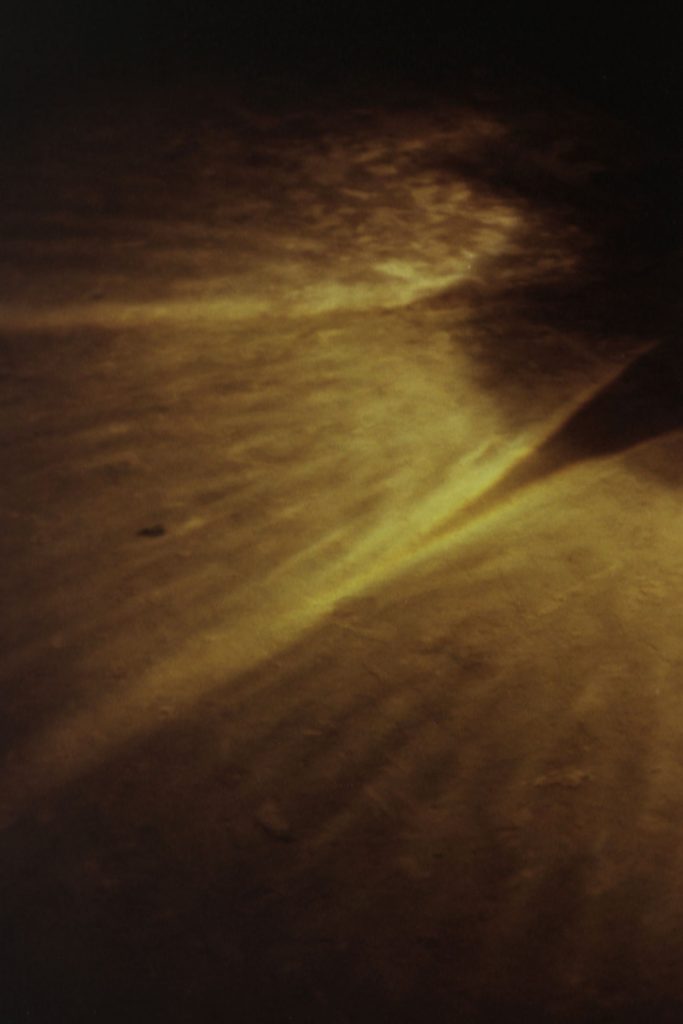
Photographed by William Rowe
Hayley Suviste has been resident at the University of Salford Acoustic laboratory carrying out a commission to look at the environment. Suviste a composer and sound artist has placed the audience in a series of situations which leave you questioning your own relationship to the river. Many of these left the audience in a sense of calm or entrancement, do we spend this same time at the River Irwell? As this series looks at a sense of passing of time in the rivers life it also questions what the river’s life should look like and what part do our lives play in that?
This performance took place multiple times on 4th May, 2025 as part of Sounds of the City Festival. In the midst of a pulsating, hectic, jubilant atmosphere there was this pocket of quiet, of calm, and of contemplation. In the midst of a party Suviste opened up a type of gulf in which we were able to connect with who we are and who the River Irwell is.
Another artist friend of ours Fiona Sinéad Brehony has written about their own experience of Suviste’s From The River’s Mouth – which you can also read below:
